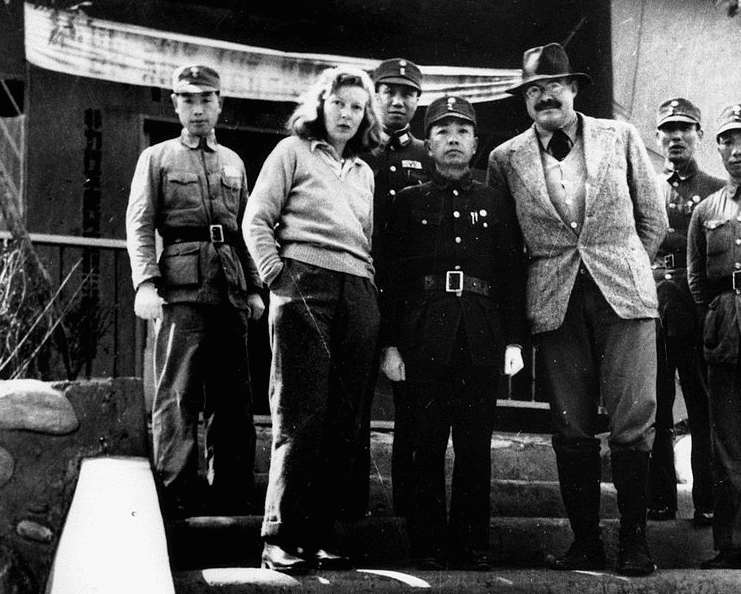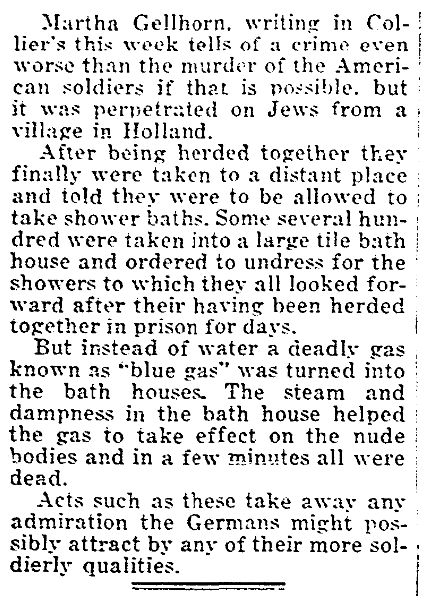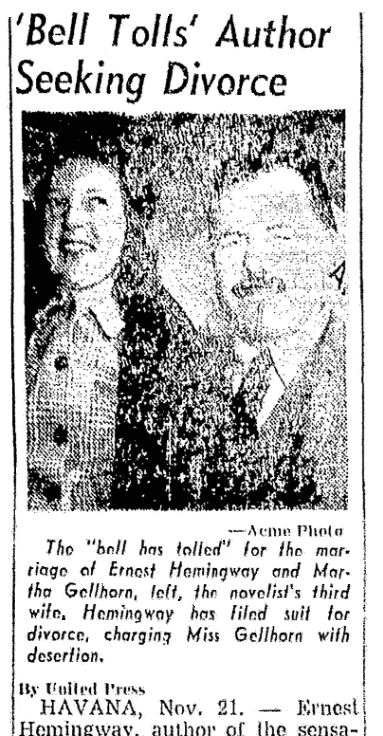Introduction: In this article, Gena Philibert-Ortega writes about famed correspondent Martha Gellhorn, who earned the special distinction of being the first female reporter to cover D-Day on 6 June 1944. Gena is a genealogist and author of the book “From the Family Kitchen.”
Martha Gellhorn (1908-1989) is a name that isn’t as well known today as it should be. In the 20th century, Gellhorn broke down barriers female war correspondents faced, paving the way for today’s journalists. Martha Gellhorn had a lengthy and prolific writing career that included writing about poverty during the Depression and continued with reporting on wars, spanning the Spanish Civil War to World War II and later the Vietnam War.
It is her reporting during World War II that is often remembered because she earned the special distinction of being the first female reporter to cover D-Day on 6 June 1944.
In accounts of Gellhorn’s life, her writing often takes a back seat to her short-lived marriage with writer Ernest Hemingway. Martha Gellhorn famously said that she was a writer before meeting Hemingway, and a writer for 45 years after meeting him – and she did not want to be known as a footnote in someone’s life. Unfortunately, although she was extremely accomplished, she often is lumped in with stories of Hemingway and his wives. Both Martha and Ernest reported during World War II, but the war eventually led to their divorce.

Martha and Ernest
Martha Gellhorn was a writer in her own right when she met Ernest Hemingway in Florida in 1936. She met the famous writer on a family trip, and the pair headed off shortly thereafter to Spain to report on the civil war there. Already on his second wife, Hemingway fell in love with Martha and began a four-year affair before finally divorcing his wife Pauline Pfeiffer and marrying Martha in December 1940.
While together, Martha and Ernest lived a life of travel and writing. They journeyed to Europe to report on both the Spanish Civil War and World War II. But it was World War II that finally ended their relationship. Martha’s career and ambition, which led her to live her own life even though it meant absences from Hemingway while she worked, was something Ernest couldn’t abide.
Martha Gellhorn, War Correspondent
Martha reported all kinds of stories from World War II, including this story from December 1944 about the atrocities committed by German soldiers against the Jewish people. Her writings would document everything from the soldiers fighting the war to the liberation of Dachau. (1)

An accomplished writer, Martha found herself in competition with her famous husband and suffered a professional blow during WWII when Collier’s magazine gave her husband Ernest the job of reporting from the front lines. Ernest would be dubbed “Collier’s famed war correspondent,” leaving Martha to cover the “women’s angle” which was farther from the action than what she wanted.
The invasion of D-Day was important and Martha wanted to be there – but despite her best efforts she was unable to obtain press credentials. However, Martha would not be deterred; she posed as a stretcher-bearer to gain entry onto a hospital ship. Once aboard she locked herself in a bathroom ensuring her passage to France – where she became the first female journalist on the beach! (2) (3)
Her report of what she saw was published by Collier’s under the title “The Wounded Come Home.” Her article described the nurses who tended the injured and dying, as well as what she saw when she reached the beach – but it did not reveal what she had to do to get to France:
“Then we stopped noticing the invasion, the ships, the ominous beach, because the first wounded had arrived. An LCT drew alongside our ship, pitching in the waves. A boy in a steel helmet shouted up to the crew at the aft rail, and a wooden box looking like a lidless coffin was lowered on a pulley, and with the greatest difficulty, bracing themselves against the movement of their boat, the men on the LCT laid a stretcher inside the box. The box was raised to our deck, and out of it was lifted a man who was closer to being a child than a man, dead-white and seemingly dying. The first wounded man to be brought to that ship for safety and care was a German prisoner.” (4)
Hemingway had also made his way to France, and his writings about the battle received a five-page spread in Collier’s Weekly on July 22nd, a month prior to Martha’s report. Not surprisingly, considering his fame, the article led with a huge photo of himself with American soldiers. His article’s opening paragraph makes it sound like he was providing an eye-witness account, but there is some confusion about Hemingway’s whereabouts on that day – leaving some scholars to believe that Hemingway actually never made it to the shores of Normandy on D-Day. (5) Despite that confusion, Hemingway wrote:
“No one remembers the date of the Battle of Shiloh. But the day we took Fox Green beach was the sixth of June, and the wind was blowing hard out of the northwest.” (6)
D-Day for the Hemingways
Considering Ernest Hemingway’s attempts to domesticate his wife, and her pursuit of a career that took her far and wide leading to her success at reporting such monumental events as D-Day, it was inevitable that their marriage would not last. By July 1945 newspapers reported that Hemingway and his third wife, Martha Gellhorn, would be divorcing in the fall. Later, November newspapers reported that the divorce was initiated by Ernest on grounds of desertion.

Martha Gellhorn went on to cover other conflicts including the Vietnam War. She was an author of books and articles and achieved what many female journalists couldn’t due to the restrictions placed on women on the battlefront. D-Day was definitely a turning point for her professionally and personally. “Mrs. Hemingway” would continue making her mark, never becoming the footnote in another person’s story.
________________
(1) “The Female War Correspondent Who Sneaked into D-Day,” The Saturday Evening Post (https://www.saturdayeveningpost.com/2018/11/the-female-war-correspondent-who-sneaked-into-d-day/: accessed 4 June 2019).
(2) “After Lovers Hemingway and Gellhorn Faced Off on D-Day, They Filed for Divorce,” Atlas Obscura (https://www.atlasobscura.com/articles/after-hemingway-and-gellhorn-faced-off-on-dday-they-filed-for-divorce: accessed 4 June 2019).
(3) “The Female War Correspondent Who Sneaked into D-Day,” The Saturday Evening Post (https://www.saturdayeveningpost.com/2018/11/the-female-war-correspondent-who-sneaked-into-d-day/: accessed 4 June 2019).
(4) “The Wounded Come Home,” The Unz Review: An Alternative Media Selection (accessed 4 June 2019).
(5) “After Lovers Hemingway and Gellhorn Faced Off on D-Day, They Filed for Divorce,” Atlas Obscura (accessed 4 June 2019).
(6) “Voyage to Victory,” The Unz Review: An Alternative Media Selection (accessed 4 June 2019).
Related Articles:
